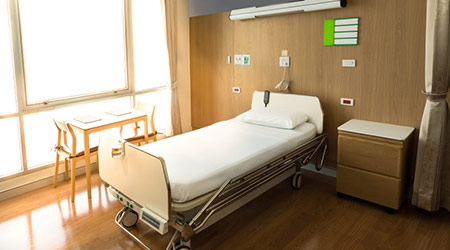Recommended current practice is to first clean the mattress surface in place with detergent and water, followed by rinsing, then use a chemical disinfectant at a pH approved by the manufacturer for the appropriate contact time, also followed by rinsing, according to an article on the CleanLink website.
The problem is threefold:
1. The procedures are rarely completed properly, especially rinsing, negating the value of the process.
2. Cleaning, wiping, and treating with a chemical disinfectant tends to break down the mattress surface material making it more porous and increasing the likelihood of body fluid penetration to the mattress core itself.
3. The problem is compounded by the time required to properly clean and sanitize a mattress using a chemical intervention. It’s rarely done right. An improperly sanitized mattress surface, as well as the underlying mattress core can become a source of cross-contamination by passing along the pathogens of the previous bed’s occupant to the next patient using the bed.
Current alternatives
UV devices are often promoted as turnkey solutions to disinfect patient rooms after one patient leaves and before another enters. In practice, the mattress is rarely fully exposed to the UV light during room treatment and UV-C cannot penetrate through bedding textiles.
Another method is removal of the mattress from the facility, then both mattress sides are vacuumed, exposed to UV light, dry steam, ozone, and infrared heat. Though the method is effective, it is relatively expensive and inappropriate for daily use in sanitizing hospital mattresses after room turnover. Also, a mattress cleaned in this way will quickly become recontaminated, negating the thoroughness of the process.
Research shows certain launderable impervious-to-water mattress covers are the best solution in healthcare to protect mattresses and prevent exposures.
Read the article.

 Contaminants Under Foot: A Closer Look at Patient Room Floors
Contaminants Under Foot: A Closer Look at Patient Room Floors Power Outages Largely Driven by Extreme Weather Events
Power Outages Largely Driven by Extreme Weather Events Nemours Children's Health Opens New Moseley Foundation Institute Hospital
Nemours Children's Health Opens New Moseley Foundation Institute Hospital Code Compliance Isn't Enough for Healthcare Resilience
Code Compliance Isn't Enough for Healthcare Resilience Ribbon Cutting Marks First Phase Completion for New Montefiore Einstein Facility
Ribbon Cutting Marks First Phase Completion for New Montefiore Einstein Facility